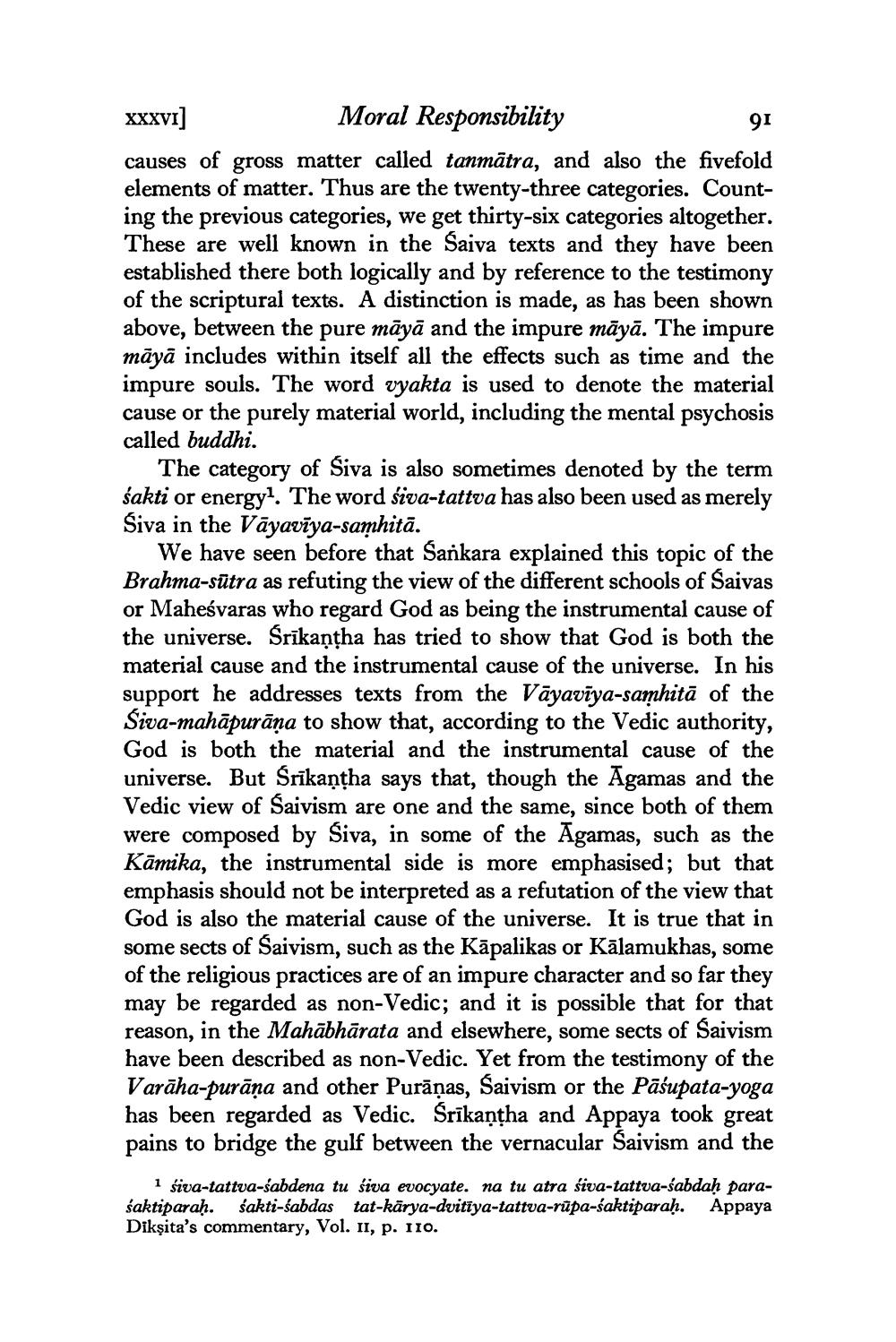________________
91
XXXVI]
Moral Responsibility causes of gross matter called tanmātra, and also the fivefold elements of matter. Thus are the twenty-three categories. Counting the previous categories, we get thirty-six categories altogether. These are well known in the Saiva texts and they have been established there both logically and by reference to the testimony of the scriptural texts. A distinction is made, as has been shown above, between the pure māyā and the impure māyā. The impure māyā includes within itself all the effects such as time and the impure souls. The word vyakta is used to denote the material cause or the purely material world, including the mental psychosis called buddhi.
The category of Siva is also sometimes denoted by the term śakti or energy? The word śiva-tattva has also been used as merely Siva in the Vāyavīya-samhitā.
We have seen before that Sankara explained this topic of the Brahma-sūtra as refuting the view of the different schools of Saivas or Maheśvaras who regard God as being the instrumental cause of the universe. Śrīkantha has tried to show that God is both the material cause and the instrumental cause of the universe. In his support he addresses texts from the Vāyavīya-samhitā of the Siva-mahāpurāņa to show that, according to the Vedic authority, God is both the material and the instrumental cause of the universe. But Srikantha says that, though the Agamas and the Vedic view of Saivism are one and the same, since both of them were composed by Siva, in some of the Agamas, such as the Kāmika, the instrumental side is more emphasised; but that emphasis should not be interpreted as a refutation of the view that God is also the material cause of the universe. It is true that in some sects of Saivism, such as the Kāpalikas or Kālamukhas, some of the religious practices are of an impure character and so far they may be regarded as non-Vedic; and it is possible that for that reason, in the Mahābhārata and elsewhere, some sects of Saivism have been described as non-Vedic. Yet from the testimony of the Varāha-purāņa and other Purāņas, Saivism or the Pāśupata-yoga has been regarded as Vedic. Srikantha and Appaya took great pains to bridge the gulf between the vernacular Saivism and the
1 siva-tattva-sabdena tu siva evocyate. na tu atra śiva-tattva-sabdah paraŚaktiparah. Śakti-sabdas tat-kārya-dvitīya-tattva-rūpa-saktiparaḥ. Appaya Dikşita's commentary, Vol. II, p. 110.




